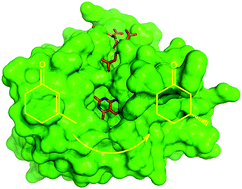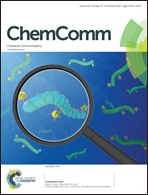Enantio- and regioselective ene-reductions using F420H2-dependent enzymes†
Abstract
In the past decade it has become clear that many microbes harbor enzymes that employ an unusual flavin cofactor, the F420 deazaflavin cofactor. Herein we show that F420-dependent reductases (FDRs) can successfully perform enantio-, regio- and chemoselective ene-reductions. For the first time, we have demonstrated that F420H2-driven reductases can be used as biocatalysts for the reduction of α,β-unsaturated ketones and aldehydes with good conversions (>99%) and excellent regioselectivities and enantiomeric excesses (>99% ee). Noteworthily, FDRs typically display an opposite enantioselectivity when compared to the well established FMN-dependent Old Yellow Enzymes (OYEs).



 Please wait while we load your content...
Please wait while we load your content...